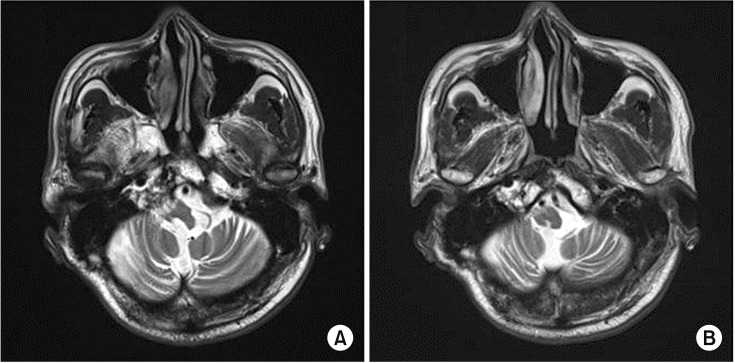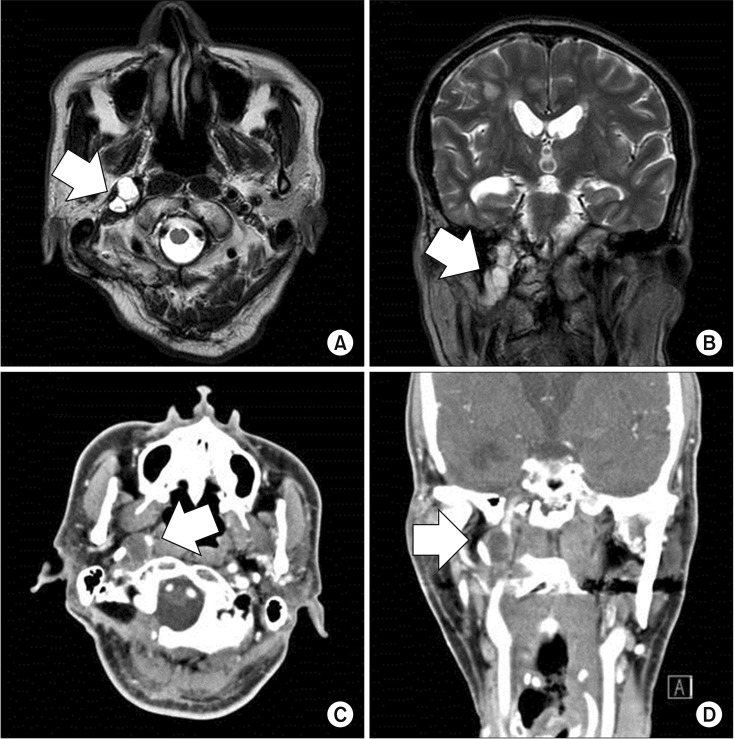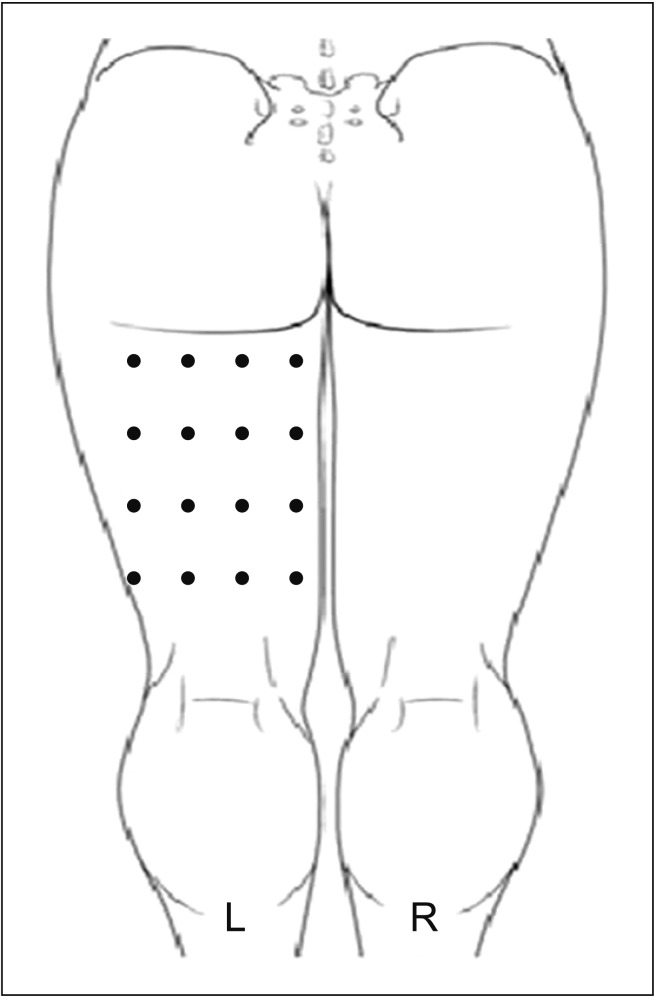Ann Rehabil Med.
2017 Dec;41(6):1088-1092. 10.5535/arm.2017.41.6.1088.
Botulinum Toxin Type A Injection for Neuropathic Pain in a Patient With a Brain Tumor: A Case Report
- Affiliations
-
- 1Department of Rehabilitation Medicine, St. Vincent's Hospital, College of Medicine, The Catholic University of Korea, Suwon, Korea. seonghoon@catholic.ac.kr
- KMID: 2400295
- DOI: http://doi.org/10.5535/arm.2017.41.6.1088
Abstract
- Neuropathic pain is usually managed pharmacologically, rather than with botulinum toxin type A (BTX-A). However, medications commonly fail to relieve pain effectively or have intolerable side effects. We present the case of a 62-year-old man diagnosed with an intracranial chondrosarcoma, which was removed surgically and treated with radiation therapy. He suffered from neuropathic pain despite combined pharmacological therapy with gabapentin, amitriptyline, tramadol, diazepam, and duloxetine because of adverse effects. BTX-A (100 units) was injected subcutaneously in the most painful area in the posterior left thigh. Immediately after the injection, his pain decreased significantly from 6/10 to 2/10 on a visual analogue scale. Pain relief lasted for 12 weeks. This case report describes intractable neuropathic pain caused by a brain tumor that was treated with subcutaneous BTX-A, which is a useful addition for the management of neuropathic pain related to a brain tumor.
Keyword
MeSH Terms
Figure
Reference
-
1. Watson JC, Sandroni P. Central neuropathic pain syndromes. Mayo Clin Proc. 2016; 91:372–385. PMID: 26944242.
Article2. Liu HT, Tsai SK, Kao MC, Hu JS. Botulinum toxin A relieved neuropathic pain in a case of post-herpetic neuralgia. Pain Med. 2006; 7:89–91. PMID: 16533208.
Article3. Oh HM, Chung ME. Botulinum toxin for neuropathic pain: a review of the literature. Toxins (Basel). 2015; 7:3127–3154. PMID: 26287242.4. Han ZA, Song DH, Oh HM, Chung ME. Botulinum toxin type A for neuropathic pain in patients with spinal cord injury. Ann Neurol. 2016; 79:569–578. PMID: 26814620.5. Cui M, Khanijou S, Rubino J, Aoki KR. Subcutaneous administration of botulinum toxin A reduces formalin-induced pain. Pain. 2004; 107:125–133. PMID: 14715398.
Article6. Aoki KR. Review of a proposed mechanism for the antinociceptive action of botulinum toxin type A. Neurotoxicology. 2005; 26:785–793. PMID: 16002144.
Article7. Gazerani P, Pedersen NS, Staahl C, Drewes AM, Arendt-Nielsen L. Subcutaneous botulinum toxin type A reduces capsaicin-induced trigeminal pain and vasomotor reactions in human skin. Pain. 2009; 141:60–69. PMID: 19004549.
Article8. Favre-Guilmard C, Auguet M, Chabrier PE. Different antinociceptive effects of botulinum toxin type A in inflammatory and peripheral polyneuropathic rat models. Eur J Pharmacol. 2009; 617:48–53. PMID: 19576881.
Article
- Full Text Links
- Actions
-
Cited
- CITED
-
- Close
- Share
- Similar articles
-
- Botulinum Toxin Injection Therapy for Lingual Dystonia: A Case Report
- Improvement of Lingual Dystonia Following Cerebellar Infarction through Botulinum Toxin Injection: a Case Report
- Botulinum Toxin-Type A in Cervical Myofascial Pain Syndrome: A report of 3 cases
- Application of Botulinum Toxin in Pain Management
- A Case of Dyspnea Caused by Local Botulinum Toxin Type A Injection




